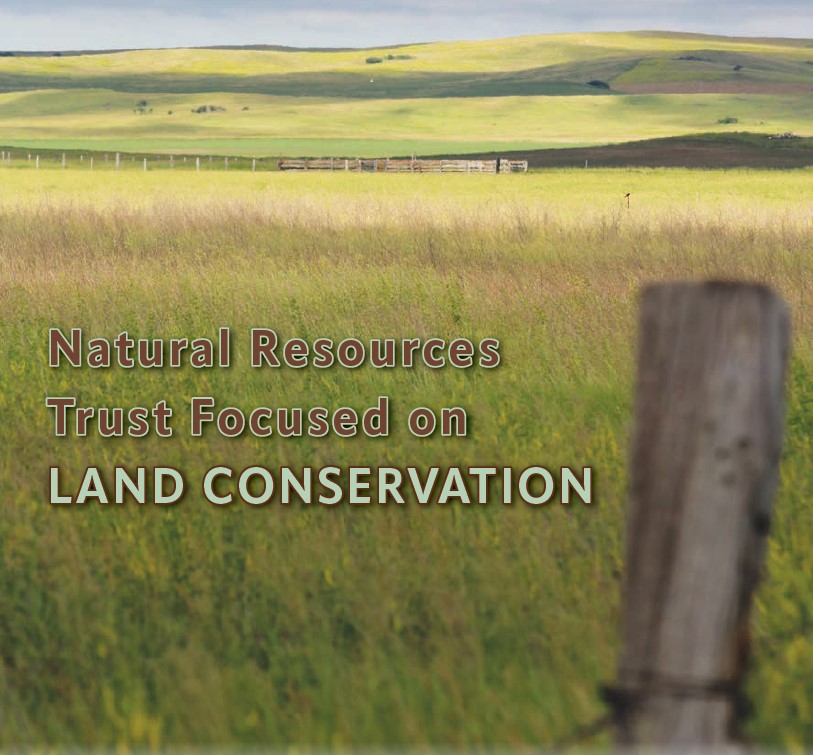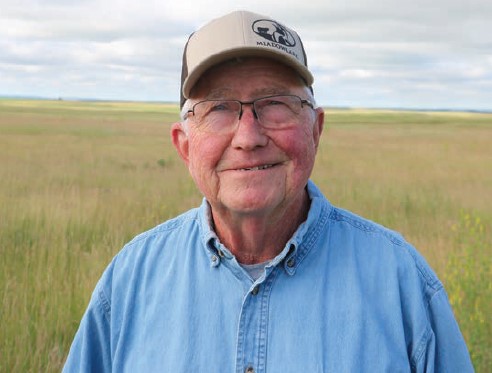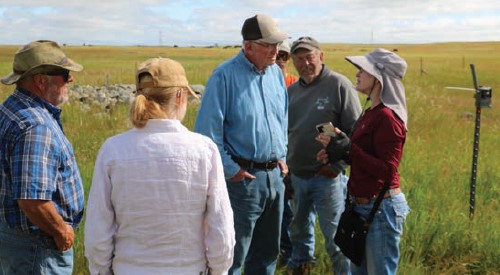News & Events
August 20, 2024
NDNRT Land Conservation and Grassland Carbon Capture
This article was taken from the August 2024 Soybean Growers Magazine, Volume 13, Issue 4.

Nearly 40 years ago, the North Dakota Natural Resources Trust was born from the conflict about how to address the Garrison Diversion Project’s effect on the state’s wetlands. Originally called the Wetlands Trust, the organization’s name and mission were changed in 2000 when the Dakota Water Resources Act was passed. “That’s when our mission was broadened to include grasslands, riparian areas, essentially all natural resource components,” says Natural Resources Trust Executive Director Keith Trego.
The Natural Resources Trust’s mission is to promote the retention, restoration and creation of wildlife-friendly management of wetlands, grasslands and riparian areas. Trego explains that the organization’s work ranges from public policy to connecting with individual producers regarding restoration, grass planting and grazing systems. “We’re very focused on the voluntary private land conservation,” Trego states. Trego describes how the Natural Resources Trust provides various cost-share and incentive programs. As a nonprofit organization, the Natural Resources Trust can be nimble and customize programs that work for individual farmers or ranchers. The Natural Resources Trust can provide cost sharing for things such as grass seeding and grazing systems. “We’ve done a lot of work over the years promoting no-till or conservation-tillage agriculture with soil conservation districts,” Trego asserts. “We can provide incentive programs for CRP (Conservation Reserve Program) enrollment or other farm bill programs.”
While many of the organization’s efforts are tied to grasslands, Trego maintains that the Natural Resources Trust is open to more opportunities to work with farmers involved with production agriculture. “As you get to the eastern end of the state, there aren’t as many conservation opportunities,” Trego explains. “You have to search a little harder, but if you look hard enough, there’s almost always something that will benefit an operation, some land that doesn’t fit the production mode as well, or areas where you can improve water quality issues or reduce movement of nutrients off the landscape.” Trego says that potential projects which landowners could have with the Natural Resources Trust might involve returning marginal pieces of cropland back to grass. Farmers could use that land for grazing and potentially get costshare assistance to help with a watering system.
The Natural Resources Trust is part of the Meadowlark Initiative, which provides landowners with a one-stop-shop for programs and practices available through various private, state and federal conservation partners to help establish and manage diverse native perennial grasses, to install grazing infrastructure and to develop working grasslands for sustainable livestock grazing. With the increased promotion of climate-smart agriculture programs, the Natural Resources Trust is involved with a large project to monitor and to analyze the carbon uptake of grasslands with a managed grazing regime. (See the sidebar article below.)

The Natural Resources Trust may be focused on grasslands, but Trego states that there are opportunities for crop producers to connect with the organization as well. “We’re very involved in anything related to soil health and sustainability,” Trego contends. Trego encourages farmers who may have potential restoration sites on their farms to contact the Natural Resources Trust to discuss the possibilities. “We want to help people figure out what works best for them on their land, whatever kind of operation they have, whatever geography they’re in,” Trego asserts. “There’s always room for some improvements in natural resource management, even if it’s just a few acres here and there. There’s so much interest in sustainability, carbon storage and pollinator habitat. There’s just so many ways that we can help producers improve their bottom line and make things better.” Learn more about the North Dakota Natural Resources Trust and its programs at ndnrt.com.
Natural Carbon Capture in Grasslands
Lewis Heaton raises soybeans, corn and wheat on his land in Burleigh County, north of McKenzie. He also has a cow-calf operation. Inside one of his pastures, which is divided into paddocks, is an array of sophisticated monitoring equipment that is gathering data around the clock to quantify how grazing management affects natural carbon dioxide capture and carbon sequestration on rangelands. “I’ve been into rotational grazing for quite a while, and I can see the benefits of it,” Heaton says. “When the carbon part came into the picture, probably 4 or 5 years ago, I was interested in knowing how much carbon we can sequester in rangeland. This project will help us quantify how much that is.”
The Heaton Ranch is part of a rangeland carbon capture project. The study is funded through a $500,000 Oil and Gas Research Fund grant awarded by the North Dakota Industrial Commission, along with funding from the North Dakota Natural Resources Trust as project lead, the McKenzie County Soil Conservation District, the North Dakota Game and Fish Department, and the National Fish and Wildlife Foundation. Researchers theorize that grazing management will increase forage production as well as the net uptake of atmospheric carbon dioxide. The North Dakota rangeland project is one of the few studies taking place with a working, ranch-sized herd.

The equipment setup is called an eddy covariance system, where the fluxes of carbon dioxide from the atmosphere into the ecosystem are measured at a pasture scale. The project tracks forage production, forage removal and pasture recovery to develop an annual carbon balance for grazed and idle pastures. “Previous work has already shown that grasslands are really important carbon sinks in terms of sequestering excess carbon dioxide in the atmosphere,” explains Rebecca Phillips, Ph.D., executive director of Ecological Insights and the principal investigator for the rangeland project. “Worldwide, they (grasslands) are more effective at sequestering excess carbon dioxide than forests. We know this because of the way deep-rooted rangeland systems allocate resources below ground and their relationships with soil microbes. Rangelands are physiologically adapted to store reserves below ground to survive drought.”
Phillips describes how the project is determining how much carbon is moving into the ecosystem as well as how much moves out on a daily basis and how the grazers are affecting that process compared to an idle pasture. Cattle graze on the various paddocks for a period of time before they’re moved to another section within the pasture, and the previous paddock is allowed to recover. “You can see the impact that grazing effect has on the carbon uptake for the entire ecosystem,” Phillips states. “When it recovers several weeks later, you can see that recovery in the data with greater amounts of carbon moving into the ecosystem. In terms of the carbon fluxes, we’re really able to track our management effects.”

The monitoring project got underway in 2023 and is expected to run through at least next year. The longer the site is operational, the more robust the data are. Phillips contends that information could be applied to model other grasslands. Among the rangeland carbon capture project’s goals is to demonstrate the value of grazing management on the rates of natural carbon dioxide capture to carbon buyers and sellers. Heaton explains how that aim was one of the reasons he was interested in hosting the research project on his land. “I’ve been interested in the business side of it,” Heaton says. “There is a market for carbon contracts, and I’ve looked at some of them, but I haven’t done anything yet.” Heaton contends that some of his grasslands could easily be converted to cropland, but knowing the value of the carbon which the grasses sequester could increase their profitability. “I’m looking for ways to make it financially equal,” Heaton asserts. More information about the project can be found at ecologicalinsights.org/ogr.
-Story and photos by Daniel Lemke
Click Here to view a copy of the article.
